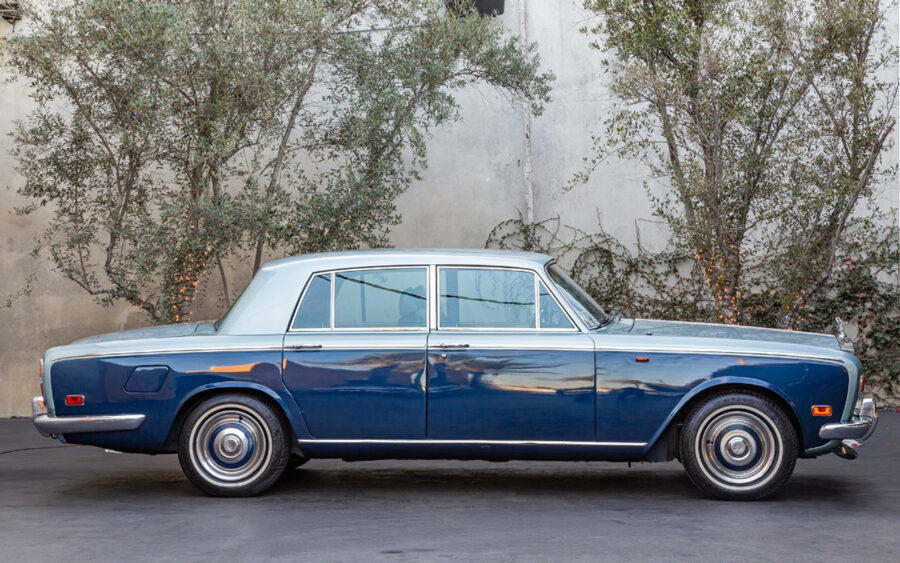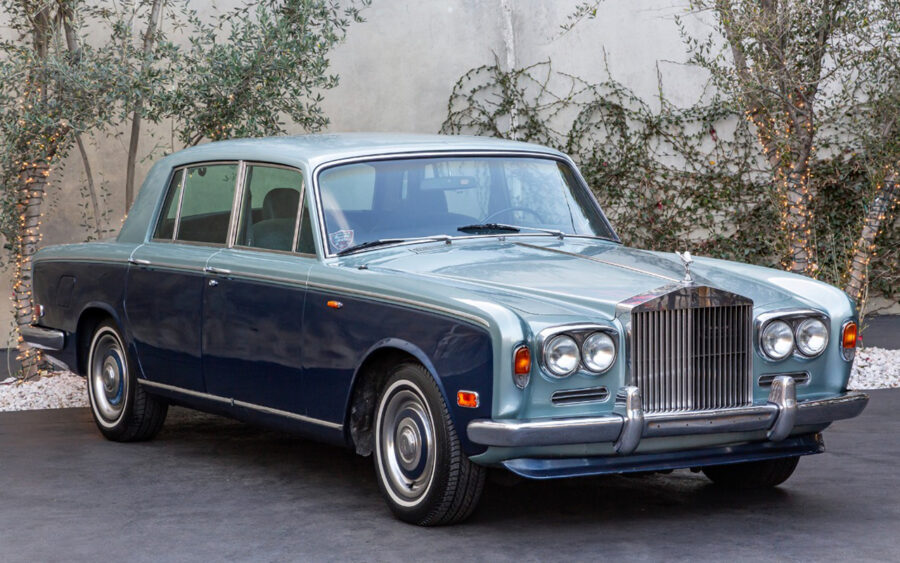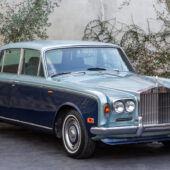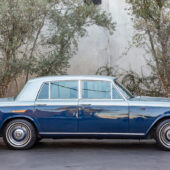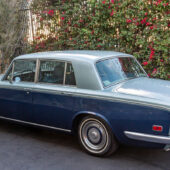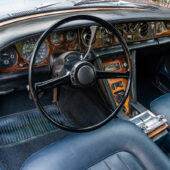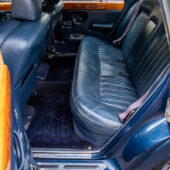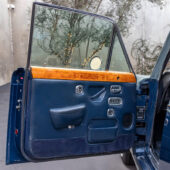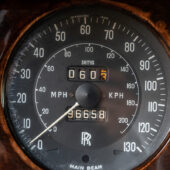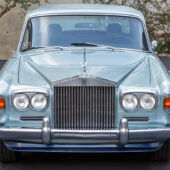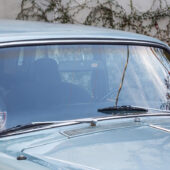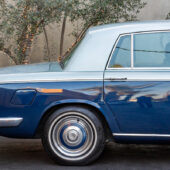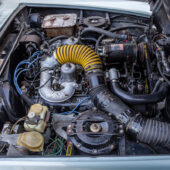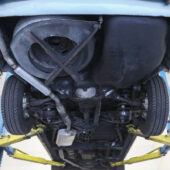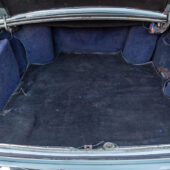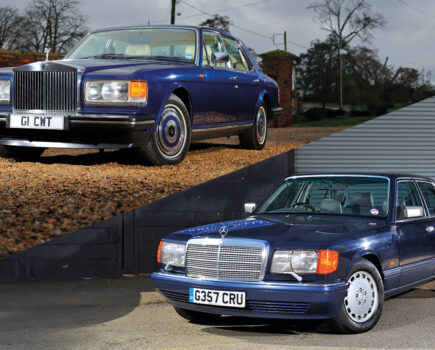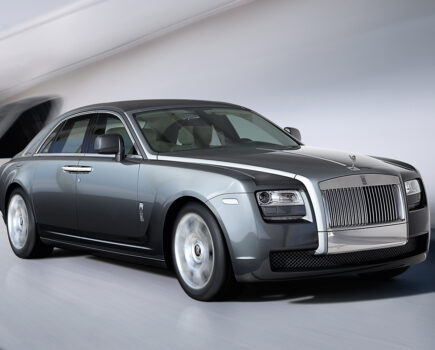As the Rolls-Royce that marked a revolution for the company back in the mid-1960s and remained on sale for 15 years, the Silver Shadow now offers a tempting ownership experience
Sponsored editorial in association with Beverly Hills Car Club
Words: Paul Guinness
The 1965 debut of the Silver Shadow represented a dramatic change of approach for Rolls-Royce, finally marking the company’s move away from traditional separate-chassis construction. What emerged was one of the stiffest monocoques ever produced up, although the modernity didn’t stop there. The Silver Shadow’s hi-tech suspension design, for example, employed a fully-independent set-up based on the hydraulic system used by Citroën but further developed by Rolls-Royce’s engineers.
Although the John Blatchley-designed newcomer was 3.5 inches narrower and seven inches shorter than its Silver Cloud predecessor, its monocoque enabled it to feature a more spacious passenger compartment. The front suspension and V8 powertrain were all located in a hefty subframe, while the car’s rear suspension set-up comprised a pair of semi-trailing arms and an equally heavy-duty carrier supporting the differential and driveshafts. Early models employed the familiar L-series V8 in 6230cc guise, fed through twin SU HIF7 carburettors.
The Silver Shadow benefited from regular updates throughout its career, the first arriving in 1968 when the four-speed GM Hydramatic-derived automatic gearbox was replaced on home-market cars by the GM400 three-speed torque converter-equipped unit. The biggest change to the Silver Shadow’s impressive technical specification, however, took place in 1970 when the V8 powerplant was enlarged to 6750cc.
Further big changes came in 1977, with that year’s heavily-revised models being designated the Silver Shadow II and Bentley T2, while the long-wheelbase version (featuring a four-inch stretch) was rebadged as the Silver Wraith II. One of the most notable changes at this time was replacing the Shadow’s recirculating ball steering with a more responsive rack and pinion set-up, while extra improvements to the suspension settings markedly improved the car’s handling and helped negate the tendency to understeer. Changes to the suspension geometry included increasing the track both front and rear, while the overall wheelbase was increased by just over half an inch. Externally, new rubber-faced alloy energy-absorbing bumpers identified the Silver Shadow II, although these heavy-gauge items had been fitted to US-market cars since 1974.
Silver Shadow II production came to an end in 1980, with many of the innovations and modifications introduced for the second-generation model being carried over to its successor, the Silver Spirit. During its 15-year production run, the Silver Shadow had proved to be a major success with over 30,000 examples of these SY-generation models produced (including the various coachbuilt versions), making it the best-selling Rolls-Royce of all time. And these days, it’s a tempting ownership proposition for enthusiasts who crave quality and opulence.
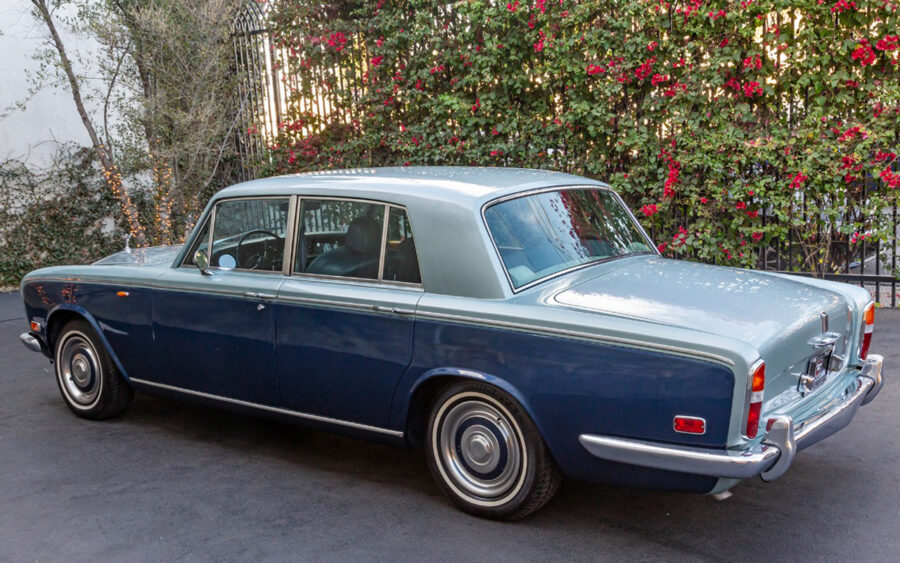
Engine, transmission and mechanicals
One potential concern with the long-running L-series V8 is corrosion of the block if the correct concentration of coolant hasn’t been used, though this shouldn’t be a problem on a well-maintained example – and only the bravest of buyers chooses one with no history. Worn tappets can also be an issue on high-mileage cars, while 6.2-litre versions can suffer from rear main oil seal leaks. Twin SU carburettors fuelled all Silver Shadows, and you should ensure these are set up properly.
Pre-1970 Silver Shadows used Hydramatic automatic transmission, subsequently replaced by a General Motors-sourced Turbo Hydramatic 400 unit. Both of these gearboxes are robust but still need checking for wear, such as slipping or jerking when swapping ratios. Check the condition of the fluid by removing the dipstick for the gearbox; if the fluid is black, has bits in it or smells burnt, the gearbox will need overhauling.
Although the self-levelling hydropneumatic suspension and braking system on these cars seems complex, there’s no shortage of specialist help out there. When maintained well, the system is very effective and usually proves reliable even over high mileages, although you should still be on the look-out for potential problems. Take a regular look at your car’s profile, for example; if it’s sitting low at the back when the engine’s running, you can be sure it’s developing issues with the self-levelling system. Very early Silver Shadows had self-levelling front and rear suspension, although the front set-up was deleted quite early on as the rear did most of the work.
If any knocks come from the front end when you’re driving, the cause is likely to be worn ball-joints – another well-known weakness.
Silver Shadow brakes are a complicated triple-circuit set-up, so again check the history file for signs of any recent maintenance or repairs. If there’s an issue and you need a braking system rebuild, it’s an expensive proposition. Check for signs of fluid leaks, and listen out for any knocking under braking as this suggests a worn hydraulic pump.
It’s important that a Silver Shadow is used on a regular basis, as the hydraulics in particular can suffer when subjected to long periods of inactivity. Specialists often suggest that an owner should budget £3000 per year in terms of ongoing maintenance, although some years this hopefully won’t all be needed, enabling you to build up a ‘buffer’.
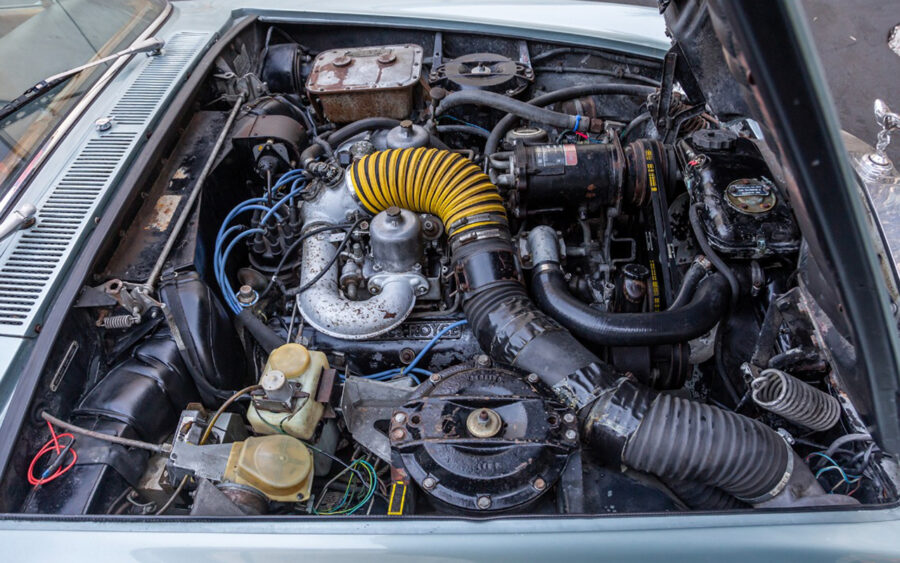
Bodywork and interior
Once you’re the proud owner of a Silver Shadow, it’s essential that you keep its bodywork in tip-top condition, as any neglect that leads to potential repairs can be very expensive. On the plus side, repair sections (for areas such as rear wheelarches and rear lower corners) are available from specialists, but you’ll need to factor in the cost of having them professionally fitted, finished and resprayed. Paintwork repairs to Rolls-Royce standards are famously costly.
When buying a Silver Shadow, the condition of its bodywork has a major bearing on its actual value, given the cost of both structural and cosmetic restoration work. Inner sills and inner wings need inspecting; and although the underside of the car (including the floorpans) generally lasts well, the suspension mounts all round need checking for rot.
The outer sills can corrode, particularly at the front and rear ends, as can the front wings where they join the sills. The bottom front of each outer wing can rust, along with the lower front valance that it meets, and rust can also attack the bumper brackets. Wheelarches are prone to rot, particularly the rears, and it’s not unusual to see the lower rear quarter panels suffering from bubbling paintwork and poor quality repairs.
If an Everflex roof is fitted, you need to carefully examine around the front and rear screens for any signs of bubbling, which will mean rotten metalwork beneath. And while we’re on the subject of trim, keep an eye on the chrome bumpers of a pre-1977 Silver Shadow, as these can blemish and start to corrode – and buying replacements or having your existing bumpers re-chromed is a costly business.
When it comes to a Silver Shadow’s interior, as an owner you want to keep up with maintenance, which means regularly treating the high-quality leather to keep it supple and crack-free, and regularly checking everywhere for signs of dampness and potential leaks – particularly if your car isn’t garaged all year round. Water might enter through a faulty screen seal, which means the surround has probably corroded; to effect a permanent repair, the screen and dash-pad will have to removed, and it’s a complex job to let new metal into the corroded area and then match in fresh paintwork.
Today’s buyers know that an interior refurbishment is prohibitively expensive, which means making sure your car’s wood-veneer trim is in perfect order; any flaky lacquer or splits in the surface could indicate issues with damp, while damage from the sun is also common. Carpets and over-rugs should also be free of damp.
When buying your Silver Shadow, you’ll hopefully have chosen one with leather that’s well-preserved, checking for cracks, splits, fading and general wear and tear. Minor damage can be repaired by specialists, but it won’t come cheap. Specialists like Flying Spares in the UK can help to keep costs more realistic, however, thanks to large stocks of secondhand seats and trim.
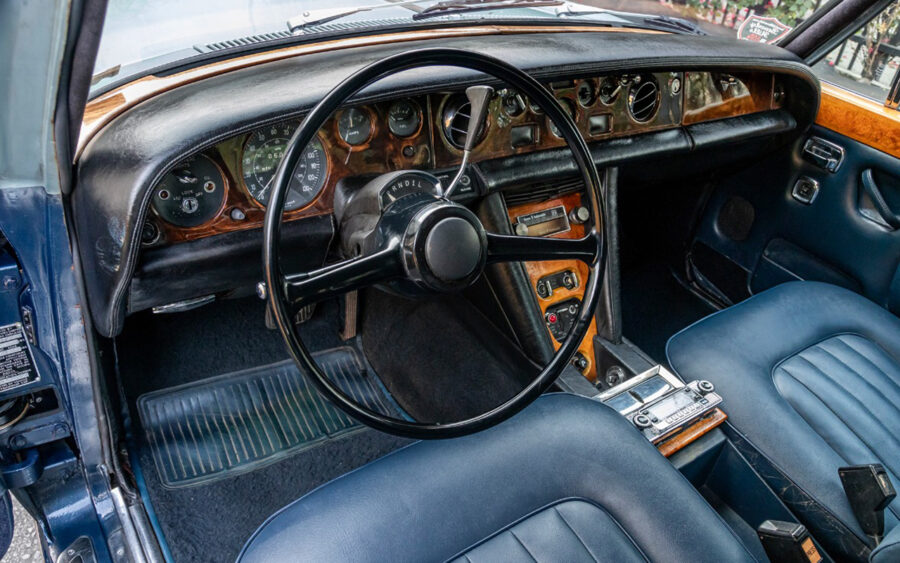
Finding a good example
Whether you’re based in the UK, the US or elsewhere, finding a Silver Shadow that fits your budget shouldn’t be too difficult… as long as that budget is realistic to begin with. Sale prices have been rising over the last decade, which means that the days of superb survivors being snapped up for ‘low thousands’ are long gone. Having said that, considering the level of craftsmanship, luxury and upmarket status that the Silver Shadow offers, it still represents excellent value for money and should prove to be a reasonable investment.
In the UK, you can pick up a Silver Shadow needing some cosmetic improvement (particularly at auction) for £5000-7000, while £10,000-12,000 will find one that’s more presentable. Around £15,000 should get you an excellent survivor, although a superb example with a low mileage and an impeccable history can easily top £20,000-25,000. You’ll often pay more for a Silver Shadow II (a popular choice thanks to its improved driving style, although not all marque enthusiasts appreciate the modernised looks), while a long-wheelbase model can command a heftier price thanks to its extra rarity. Bentley derivatives of the four-door saloons tend to be similarly priced, despite them being much scarcer.
In the US, the Beverly Hills Car Club always has a good selection of Silver Shadows available. At the time of writing, these start at well under $10,000 for a fresh-out-of-storage example that needs recommissioning, while a presentable Silver Shadow II that’s had the same owner for the last 30 years can be yours for around $15,000. You’ll obviously pay more when an immaculate, low-mileage example comes into stock, but these go to show the potential value of this classic Rolls-Royce on the US market.
Sponsored by Beverly Hills Car Club
The automobiles sold at Beverly Hills Car Club combine all the elements of its exclusive address in Los Angeles: cars for sale that are the very last word in tasteful elegance, chic and impressive sophistication, with careful attention given to each vehicle and each client. Both national and international customers are catered for, with a huge stock of classics to choose from.
For more information and to view the Beverly Hills Car Club stock, visit beverlyhillscarclub.com
